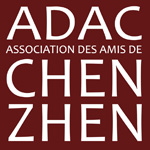
 |
||||||||
|
|
|
|
|
|
|
|
|
|
|
|
ACTUALITES - 20192019 SHOWS
Chen Zhen / Catalogue Raisonné
Tome / volume I (1977 - 1996) et Tome / Volume II (1997 - 2000)
ADAC – Association des Amis de Chen Zhen
Cliquez ici pour télécharger l'offre de souscription à l’achat et suivez les consignes marquées dessus. Click here to download the subscription document, and then follow the instructions.
Chères amies et chers amis,
"Un Village sans frontières"
MoMA
11 West 53 Street, Manhattan, New York Collection permanente
2019
The works “Un Village sans frontières” Chen Zhen realized in 2000 belonging to the collection of MoMA are currently on view in the Museum’s newly reinstalled collection galleries.
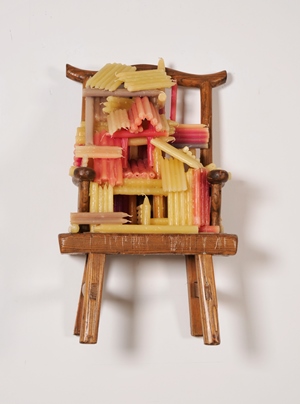 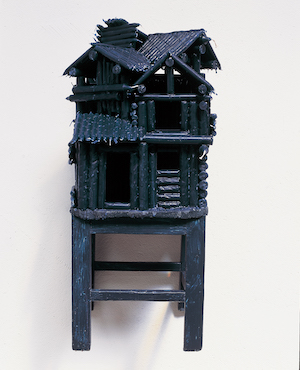 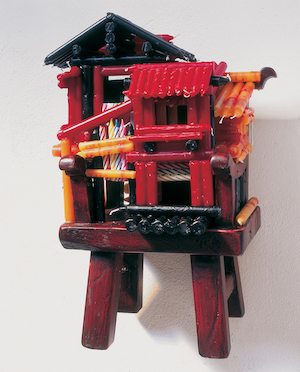 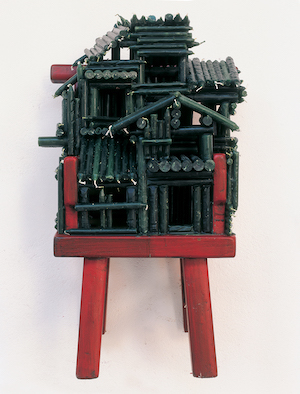 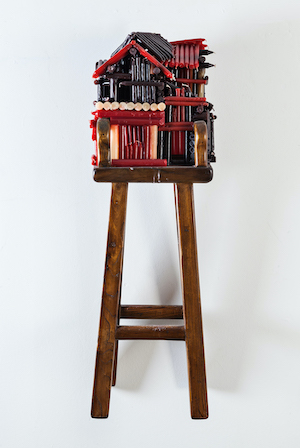
Chen Zhen - Un Village sans frontières
2000 / Ph.: Duccio Benvenuti
"SUBLIMI ANATOMIE"
Palazzo delle Esposizioni
Via Nazionale 194, Roma 00184 curated by Andrea Carlino, Philippe Comar, Anna Luppi, Vincenzo Napolano, Laura Perrone Scientific Committee Vincent Barras, Massimo Bray, Chiara Cappelletto, Maria Conforti, Ester Coen, Fernando Ferroni, Adelina Cüberyan von Fürstenberg
October 22, 2019 > January 6, 2020
Sublimi Anatomie, is designed to rediscover the cognitive and critical importance of observing the human body, a multimodal practice with a centuries-old history, primarily involving the senses such as sight and touch but also techniques, instruments and technologies. The exhibition will be showcasing a selection of objects and documents of immense historical, art historical and scientific importance illustrating the history both of the observation of the human body and of the human body as observer in the arts and sciences, while also linking up to contemporary artistic research in drawing, sculpture, multimedial art and performance art as it seeks to shed light on the physical and material nature of the body; and all of this, without forgetting the importance of the machines that appear to be able to explore even the body's least visible details and its most complex processes. Sublimi Anatomie will focus around a reconstruction of the Amphithéâtre de Morphologie in the École Nationale Supérieure des Beaux Arts in Paris, which hosts a late 18th century anatomy theatre inspired, in its turn, by similar anatomical theatres in Padua (1595) and in Bologna (1637). Thus fitted out, the rotunda in the Palazzo delle Esposizioni will become a fully-fledged workshop for drawing from life, in this case replacing corpses with living models in order to stimulate observation from life as an analytical tool designed to trigger dynamics capable of activating the eye, the hand and the body, and hosting a scientific, socio-anthropological and philosophical debate on the vision and "construction" of the image of the human body. As a venue for gesture and movement, the rotunda will serve both as training ground and as a stage for performances.
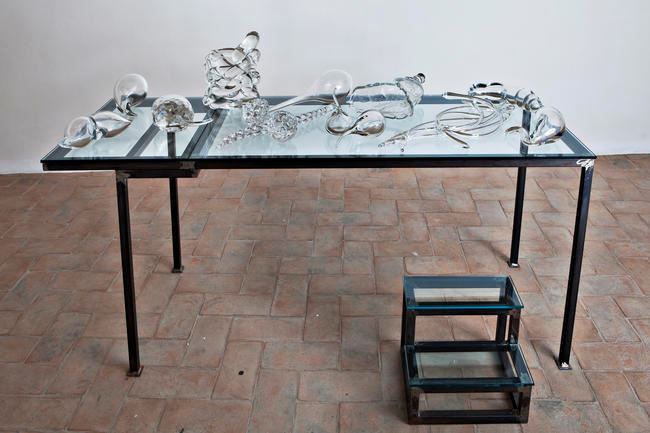
Crystal Landscape of Inner Body (Serpent), 2000
Crystal, metal, glass 95 x 190 x 70 cm Ph. Ela Bialkowska
"Society Guidance: Part II"
curated by Bian Ka, UCCA Head of Exhibitions
UCCA Center for Contemporary Art 4 Jiuxianqiao Rd., Chaoyang District Beijing 100015, China
2019.8.31 - 2019.11.24
http://ucca.org.cn The exhibition features work by Chen Zhen, Huang Jingyuan, Li Juchuan, Double Fly Art Center, Shi Yong, Xing Danwen, Xu Tan, and Xu Yong, made during, or in relation to, the 1990s. Also included is a special presentation devoted to Wildlife Art Project, a unique art program of the period. The exhibition is a continuation of “Society Guidance: Part 1,” exhibited from May 18 to August 18, 2019, which presented artworks together with a reading room of archival materials, to outline for viewers the wider context of rapid economic and social change in 1990s China. Artists responded to changing moral standards and incipient commercialism through a variety of strategies, some retreating from the social sphere while others dove headlong into emerging consumer culture. The second installment of “Society Guidance” focuses on the latter half of the 1990s, a time of profound change, which deepened and continued the economic reforms first initiated in 1978. The transformation of China’s economic system, social structures, and cultural life in the beginning of the decade prompted an uncertain atmosphere that carried over into the following years, which would see the further decline of the Enlightenment culture that defined the country’s intellectual life in the 1980s, along with the emergence of the Internet, and increased awareness of the outside world. “Society Guidance: Part II” presents a snapshot of the 1990s as a moment when a multitude of new directions emerged in Chinese society and contemporary art, while also sharing a range of differing perspectives on the ostensibly “incomplete” cultural landscape of the time.The show attempts to present a vision of the 1990s true to the decade’s fragmented nature. “Society Guidance” (Renjian Zhinan, 人 间 指 南) takes its title from the fictional magazine at the center of the 1991 Chinese television comedy Stories from the Editorial Board (Bianjibu de Gushi, 编辑部的故事). Featuring some of the biggest stars of the day, including Ge You and Lü Liping, the program humorously introduced emerging social phenomena, shaping the public imaginary of the period. As such, the title may also be understood as referring to the desire for a new and durable system of values at a time of constant change, defined by new economic paradigms, shifting social norms, and collective feelings of anxiety and confusion.
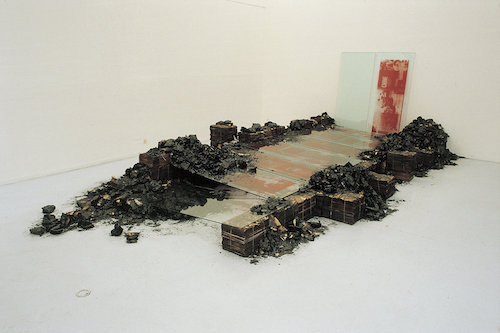
Fondation du berceau, 1993
Burned newspapers, newspaper ash, string, glass, screen printed glasses 240 x 380 x 950 cm
"Allure of Matter: Material Art from China"
LACMA, Los Angeles County Museum of Art, BCAM level 2 and the Resnick Pavilion, 5905 Wilshire Boulevard, LA, USA
2 June 2019 - 5 January 2020
The show brings together 34 works from the past four decades, in which conscious material choice has become a symbol of the artists’ expression. The Allure of Matter features 21 of the most important and influential Chinese artists working today.
The Allure of Matter is an opportunity to see some of the leading works of art coming from China today; While most of the exhibition’s featured artists are well known in the Chinese contemporary art world, they are still little-known in the U.S. Since the 1980s, Chinese contemporary artists have cultivated intimate relationships with their materials, establishing a framework of interpretation revolving around materiality. Their media range from the commonplace to the unconventional, the natural to the synthetic, the elemental to the composite. The concept of Material Art is related not only to the general term “materiality” in contemporary art, but also refers more specifically to artworks with the goal of making “matter” the primary vehicle of philosophical, political, sociological, emotional, and aesthetic expression. Some of these works reject constructed forms altogether, but most reverse or problematize the conventional relationship between medium and representation. In either case the material (and related technology), becomes the message. The conditions of contemporary Chinese art offer reasons for the prevalence of Material Art and its continuous relevance, which has been developed to fulfill two simultaneous objectives of disavowing established art forms and inventing new artistic languages. The Allure of Matter features 34 works based on their historical importance, representativeness, and visual quality. Created from the late-1980s to the present day, the works include two-dimensional, three-dimensional, and new media works that are complementary in form, material, and visual effect. Featured artists: Ai Weiwei, Cai Guo-Qiang, Chen Zhen, Gu Dexin, Gu Wenda, He Xiangyu, Hu Xiaoyuan, Jin Shan, Liang Shaoji, Lin Tianmiao, Liu Jianhua, Ma Qiusha, Peng Yu, Song Dong, Sui Jianguo, Wang Jin, Xu Bing, Yin Xiuzhen, Zhan Wang, Zhang Huan, Zhu Jinshi.
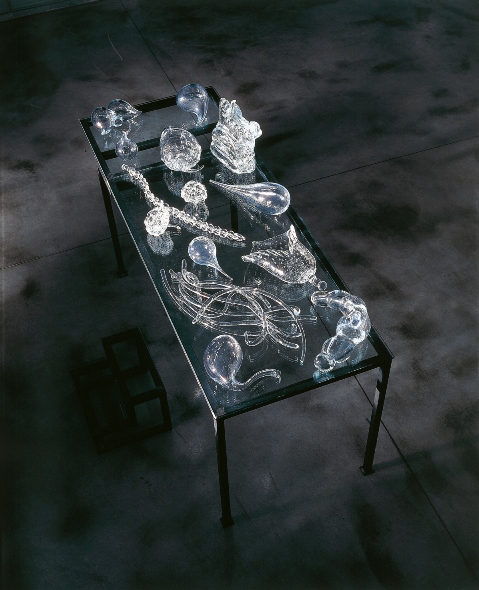
Crystal Landscape of Inner Body
(Coq) 2000 Crystal, metal, glass 95 x 190 x 70 cm Ph. Ela Biakowska Courtesy: GALLERIA CONTINUA, San Gimignano / Beijing / Les Moulins / Habana
"Chen Zhen’s “Transexperience” across the world and within life"
陈箴在世界各地和生活中的“融超经验” 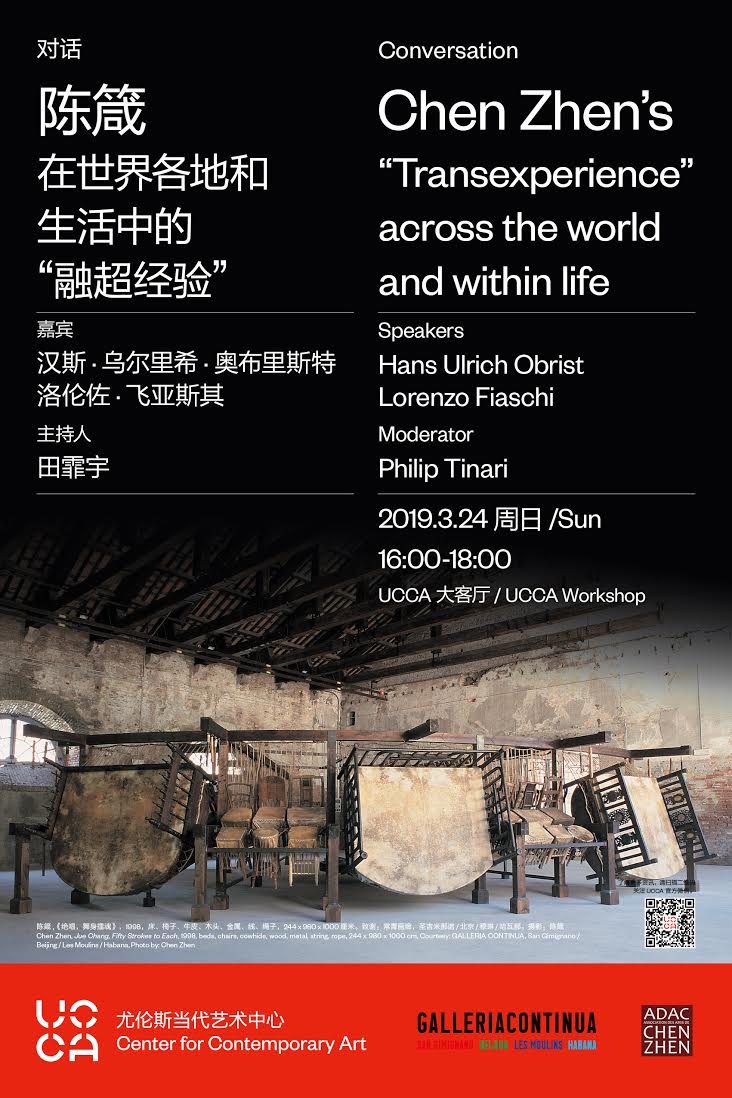
Hans Ulrich Obrist (Artistic Director of the Serpentine Galleries in London) will be in conversation with founder of Galleria Continua Lorenzo Fiaschi, they will analyze different themes of Chen Zhen’s work, Introduced by Philip Tinari (Director and CEO of UCCA Center for Contemporary Art). The conversation will be held in UCCA’s Workshop during Gallery Weekend Beijing.
In particular, Hans Ulrich Obrist will examine the subject of “Art and Healing”; at the age of 25, in fact Chen Zhen was struck with an incurable illness, hemolytic anemia, which led him to achieving vast insight into the value of time and space at a strong analytical level. Obrist will investigate the methaphor of sickness and healing expressed through art and the way in which art can have a positive impact on health. While Lorenzo Fiaschi will deepen the subject of “Transexperience” that the artist has always lived throughout his art and life, constantly travelling and experiencing different culture as a way of being alive. 画廊周北京期间,汉斯·乌尔里希·奥布里斯特(伦敦蛇形画廊艺术总监)将与常青画廊创始人之一洛伦佐·飞亚斯其进行对话,对陈箴作品中的不同主题进行分析。对话由田霏宇(UCCA尤伦斯当代艺术中心馆长及CEO)担任主持,对话活动将在UCCA大客厅内举行。 汉斯·乌尔里希·奥布里斯将着重探讨“艺术与治疗”相关话题。在陈箴25岁那年,他被诊断出患有溶血性贫血——一种无法被治愈的疾病,生病的经历令陈箴对时间和空间概念产生了深刻的探索和洞见。汉斯将讨论一系列通过艺术表达的对疾病和治疗的隐喻,也将探讨艺术怎样对健康产生积极的影响。同时,洛伦佐·飞亚斯其将深入探讨艺术家在其创作和生活中都体会过的“融超经验”——一种不断地旅行并体验不同文化的生活方式。
"Eldorama"
Group Exhibition
Tripostal, Lille
27 avril - 1 septembre 2019
Vaisseau amiral de lille3000, le Tripostal déroule le grand récit de l’Eldorado à travers une myriade d’œuvres d’art contemporain empruntées aux quatre coins du monde. En trois chapitres, correspondant aux trois étages du lieu (1. Les Mondes rêvés - 2. La Ruée - 3. Nouveaux Eldorados), l’exposition met en scène l’aventure universelle de tous les Eldorados qui font se déplacer et se mouvoir des individus et des peuples. Ponctué d’œuvres qui lancent le mouvement, tandis que d’autres s’offrent comme des stations idéales avant de repartir vers d’autres horizons, le parcours déploie un récit épique dynamique, mais également sauvage et violent, animé par le regard fasciné ou critique que portent les artistes sur les multiples Eldorados promis par notre monde contemporain.
Espoir d’une vie meilleure, désir de richesse et de plénitude : l’Eldorado est une rêverie agissante, qui fait migrer et mouvoir des peuples entiers comme des individus isolés. Il y eut d’abord, dans l’Antiquité, les mythes anciens des cités perdues, des atlantides englouties avec toutes leurs richesses. Puis ce fut au XVIe siècle la conquête des Eldorados du Mexique et du Pérou, le pillage sauvage des trésors Aztecs ou Incas. Ensuite, l’Eldorado est un mythe sans cesse renouvelé, qui nous entraîne aux pays de l’or jaune, mais aussi de l’or noir (le pétrole), de l’or vert (l’écologie) ou encore dans les paradis artifciels ou fscaux. L’Eldorado commence par là : par l’attraction des mondes rêvés, inventés, des utopies bienheureuses construites par le désir. -Puis vient le temps du départ. L’exil, l’exode, la ruée. Des populations entières s’élancent à la recherche éperdue d’un Eldorado fantasmé. Tous les véhicules sont bons. On y va par la mer, par les routes et aujourd’hui par les airs et jusque dans l’espace, cet Eldorado du futur. Des ruées vers l’or, il y en eut au XIXe siècle vers l’ouest américain, mais aussi en Australie, en Afrique du Sud autour de Johannesburg, ou dans le grand Nord de l’Alaska. C’est une histoire violente, brutale, faite de conquêtes, de massacres, de colonies, d’exploitations, de déceptions. Beaucoup iront fouiller le ventre de la Terre. Mais tous n’y trouveront pas le trésor tant espéré et reviendront hagards et bredouilles. Pour mieux repartir vers de nouveaux Eldorados. L’Eldorado est toujours ailleurs. Et de fait son grand récit connaît aussi l’épreuve de la désillusion : en passant d’un pays rêvé aux terres réelles, l’aventurier s’installe dans une nouvelle vie faite d’habitudes, de routine, et bientôt d’ennui. Il se met à rêver, une fois encore, d’un autre Eldorado. Notre monde contemporain en est plein et agite sans cesse sous nos yeux les mirages de nouveaux paradis, souvent contradictoires : îles lointaines ou zen intérieur, exil fscal ou décroissance écologique... Dans ce dernier chapitre, on évolue ainsi entre des œuvres tantôt critiques, tantôt rêveuses, entre déception et nouvel espoir. Commissariat : Jérôme Sans, Jean-Max Colard, Avec la collaboration d’Isabelle Bernini
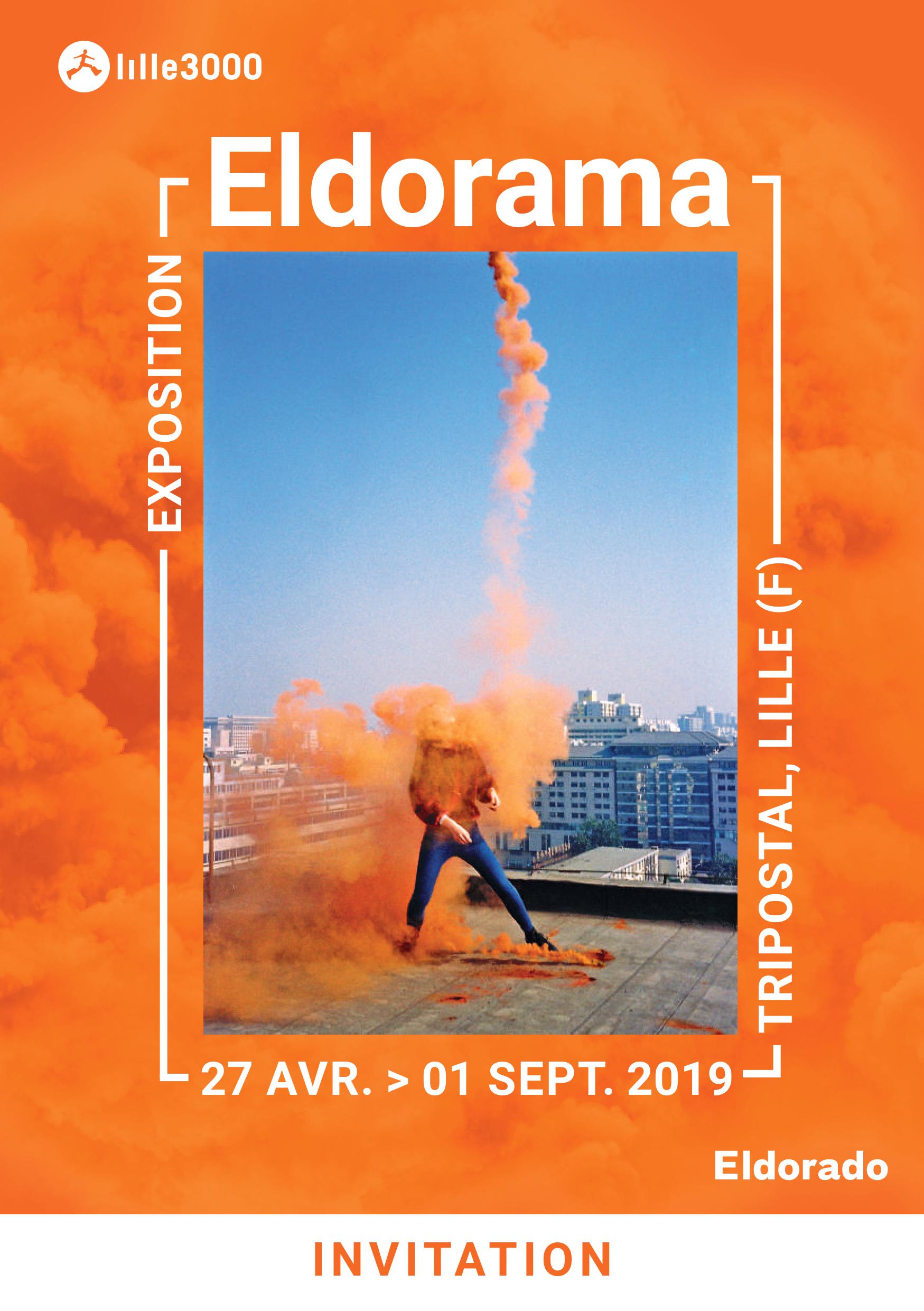 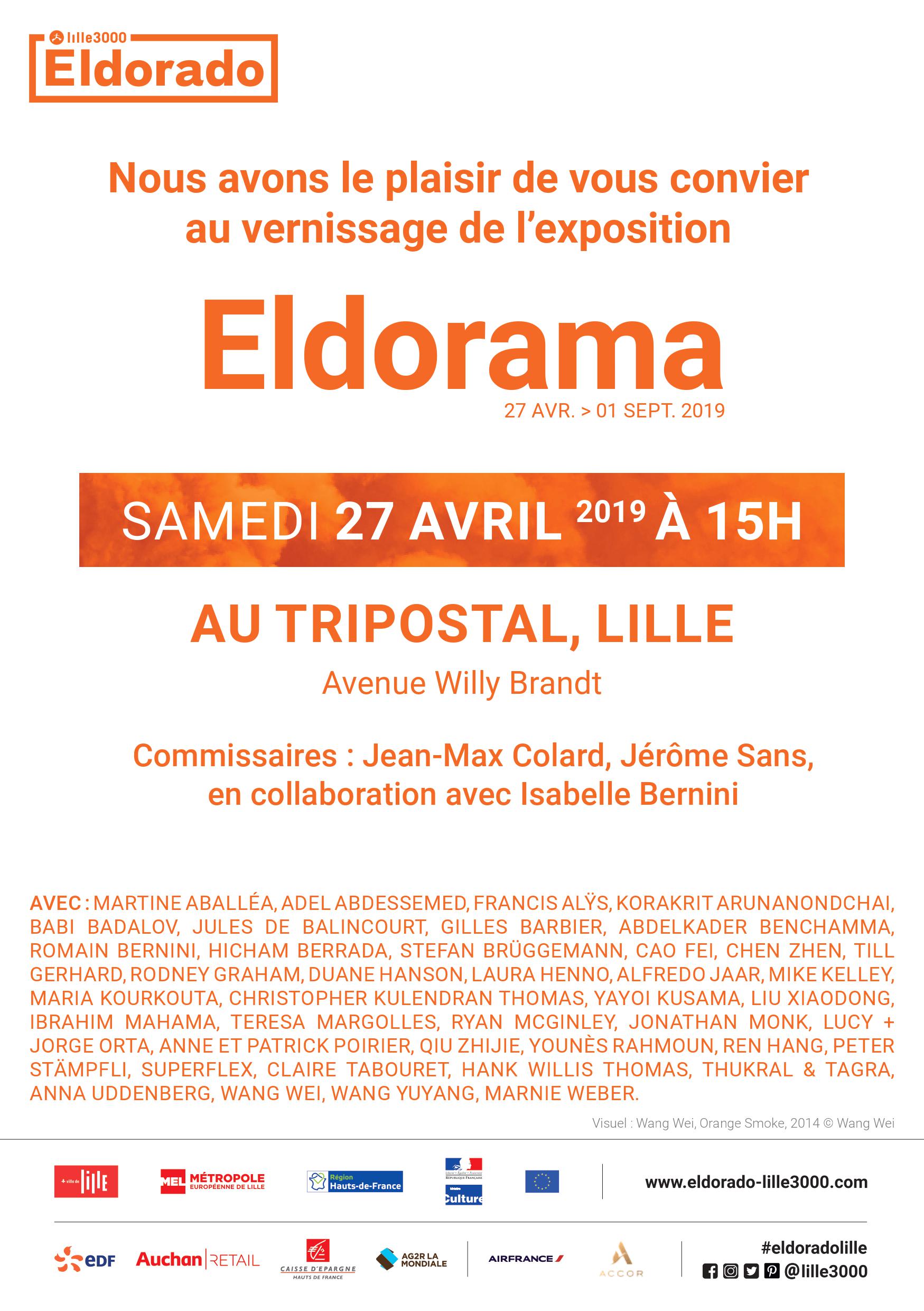 . .
The fagship of lille3000, the Tripostal unfolds the great story of Eldorado through a myriad of contemporary works of art borrowed from the four corners of the globe. It divides it into three chapters, one for each of the building’s three foors: (1. Dream Worlds, 2. The Rush, 3. New Eldorados). The exhibition stages the universal adventure of all Eldorados, which have the power to uproot individuals and entire peoples. Interspersed by works that spark movement, while others offer themselves as ideal stations before moving on to other horizons, the journey develops into a narrative that is dynamic and epic, but also wild and violent, brought to life by the artists’ fascinated or critical viewpoints on the many Eldorados promised by our contemporary world.
Embodying the hope of a better life and a promise of wealth and fulflment, Eldorado is an active dream driving the migrations and movements of both entire peoples and isolated individuals. First, in antiquity, there were the ancient myths of the lost cities – Atlantis swallowed up with all its riches. In the sixteenth century, came the conquest of the Eldorados of Mexico and Peru, the savage plundering of Aztec or Incan treasures. Thereafter, Eldorado became a constantly renewed myth, leading to the lands of yellow gold, but also gold that came in black (oil) and green (ecology), or even to artifcial paradises or tax havens. That is where Eldorado begins: with the attraction of dreamed-of, invented worlds, of blissful utopias created by desire. Then comes the time of departure. Exile, exodus, fight. Entire populations set forth in a headlong rush to reach a fantasised Eldorado. Any means of getting there will do. People travel by sea, by road and today by air and even into space, this Eldorado of the future. There were gold rushes in the nineteenth century in the American West, but also in Australia, South Africa around Johannesburg, or in the far north of Alaska. These rushes form a violent, brutal history, made up of conquests, massacres and disappointments. Many have gone digging in the belly of the Earth. But not everyone fnds the much-coveted treasure they seek and so must return distraught and empty-handed. Only to leave again, lured by new Eldorados. Eldorado is always somewhere else. Indeed, the great narrative of Eldorado also endures the test of disillusionment: when the dream country becomes a real land, the adventurer settles into a new life made of habits and routines, so that boredom soon sets in. He begins to dream, once again, of another Eldorado. Our contemporary world is full of such places and constantly entices us with the mirages of new and often contradictory paradises: distant islands or inner Zen, fscal exile or ecological degrowth... In this last chapter, we thus move between works that are by turns critical and dreamy, oscillating between disappointment and new hope. Curators: Jérôme Sans, Jean-Max Colard With the collaboration of Isabelle Bernini
"Art and China after 1989: Theater of the World"
Group exhibition
San Francisco Museum of Modern Art, San Francisco
Curated by Alexandra Munroe, Philip Tinari, Hou Hanru.
10 novembre 2018-24 février 2019
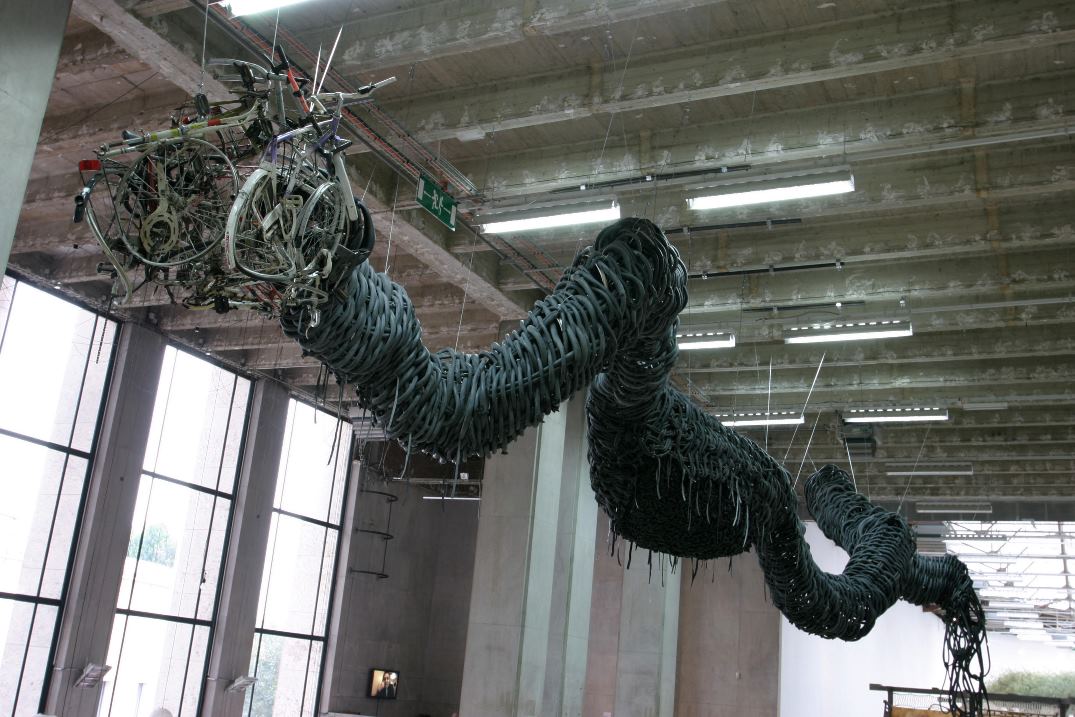 Chen Zhen, “Precipitous Parturition“ 1999 (vue Palais Tokyo, Paris 2003)
L’Art et la Chine après 1989: Le théâtre du monde nous présente les créations d'un audacieux mouvement d'art contemporain né à l'époque de la plus grande transformation de l'histoire de la Chine moderne et le monde actuel. L'Art et la Chine après 1989, organisée par le Musée Solomon R. Guggenheim réunit les œuvres de 71 artistes et groupes clés qui ont travaillé en Chine et dans le reste du monde, et dont les provocations aspirent à forger une réalité idéologiquement libre, à renforcer le rôle de l'individu indépendamment du groupe, et à définir l'expérience contemporaine en Chine dans une optique universelle…
|